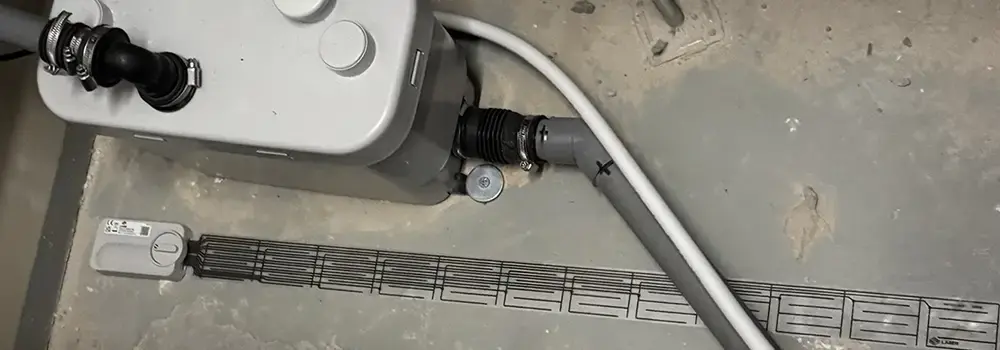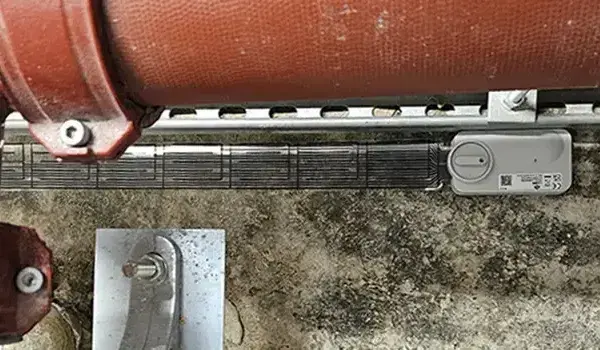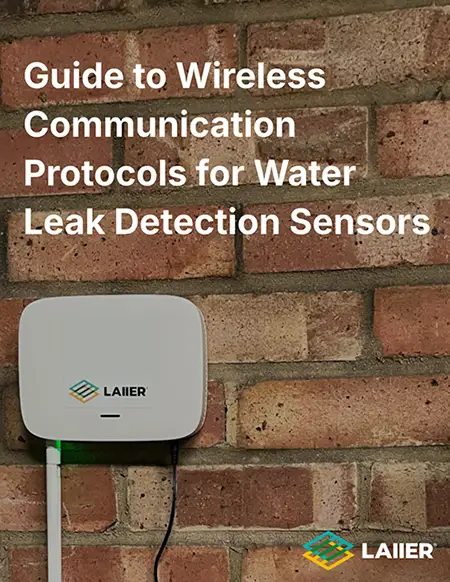Early Water Leak Detection for Facilities Management
Detect even the smallest of leaks in the least accessible places, before they cause major maintenance issues.
Detect even the smallest of leaks in the least accessible places, before they cause major maintenance issues.
Escape of water leaks in UK commercial & residential buildings cost £987M in 2022. Manual water leak inspections are no longer enough. You need predictive water leak detection.
Severn WLD™ is a smart water leak detection system that tells you where a leak is before you can even see it. Using smart technologies, it precisely detects and locates leaks for you well before they cause a significant problem. Many traditional water leak detectors frustrate facilities managers with high false positive rates, but LAIIER's water leak detection solution minimizes false positives by allowing you to define what a genuine water leak is for each device.
Don’t let small, virtually undetectable leaks turn into an expensive repair job. Detect and repair them before they cause a major issue.

Automatically detect genuine water leaks before they're visible - even when they're small, in wet and/ or concealed locations, or when no one is onsite.
Use the adjustable sensitivity to set different leak alert thresholds for different use cases, on a device-by-device basis. Reliably detect water leaks even in wet areas, without risking frequent false positives.
Get real-time information about when and where water leaks occur, even when you and your team are offsite, or across town.
Deploy sensors in minutes, without needing specialist tools. Install in small, leak-prone spaces, even if some water is present.
Minimize resource-intensive manual water leak inspections, especially in large sites and hard-to-reach places. Redirect resources from leak detection to repair and maintenance.
Spend less time and money on manual water leak detection - and even less on major repairs and facility downtime due to catastrophic leaks.
Gain insights into where and when leaks occur. Identify factors that increase the likelihood of leaks, across facilities and usage.
Significantly reduce both water loss, and the carbon footprint associated with major leak-related repairs.
Facilities managers employ Severn WLD to monitor anywhere a water leak is likely, costly, or both - including:

[text here about the cool download and what they get.]
Everything facilities management teams need to know about IoT communication protocols
(but don't want to ask)
Our Quick Reference Guide breaks down the pros and cons of 6 of the top IoT protocols for wireless water leak detection, in clear language.
No technical fluff, just straightforward explanations designed to help you choose which protocol is right for the facilities you manage.

Water leaks in commercial buildings often stem from aging infrastructure, failures in plumbing systems, HVAC condensation, and malfunctioning appliances. Hidden leaks behind walls or under floors can go undetected for months, causing structural damage, mold, and higher utility bills.
Any facility with critical infrastructure, sensitive equipment, or high foot traffic can benefit. This includes office buildings, multifamily residential properties, retail environments, airports, life science facilities, and student accommodation.
Preventing water damage is especially important in facilities with aging plumbing or legacy HVAC systems.
Smart leak detection solutions like LAIIER's water leak sensors provide early warning of water intrusion, allowing facilities teams to act before costly damage occurs. This reduces emergency repairs, insurance claims, and downtime, all of which combine to create significant operational cost savings over time.
Investing in technologies like water leak detection enhances asset longevity, ensures regulatory compliance, and supports sustainability goals by reducing water waste. It also builds trust with tenants and stakeholders by maintaining safe, damage-free environments.
The Severn WLD device checks for water on each of its electrode every minute. When it detects the presence of water on 4 or more electrodes, the device uses the LoRaWAN communication protocol to send an emergency message to a gateway, which then connects with LAIIER Cloud and notifies you via email or SMS.
(You have the option to change the level of sensitivity for water detection, triggering an alert when just one electrode detects water, or any number up to the full 12 electrodes.)
To give you peace of mind that Severn WLD continues to operate even when there's no water detected, it also sends a regular "heartbeat" message to LAIIER Cloud every 4 hours.
The Severn WLD device checks for water every minute, and sends an emergency message immediately when water is detected.
Severn WLD sends a regular “heartbeat” message every 4 hours.
The active battery life is 6 years.
However, the battery life may vary, depending on:
Our water leak sensors are designed for durability and low maintenance. Once installed, they require minimal upkeep, with performance monitored remotely through the platform’s cloud-based dashboard.
Yes, you can change some of the settings on Severn WLD:
Yes. LAIIER's sensors are designed for non-invasive installation, making them ideal for retrofits. They can be easily deployed in existing commercial buildings without the need for costly renovations or infrastructure changes.
Installation doesn't require specialist tools or expertise, and typically takes just minutes per device.
Yes. LAIIER’s solutions are designed to be interoperable with standard BMS and IoT platforms. This ensures facilities managers can consolidate data and alerts within a unified dashboard for streamlined operations. Please book a call with our team to discuss your integration requirements.
Please book a discovery call with our team! We'll discuss your facilities and water leak concerns, then recommend strategic sensor placements, and support your team through deployment and onboarding.